
Lille is a city in the northern part of France, within French Flanders. Positioned along the Deûle river, near France's border with Belgium, it is the capital of the Hauts-de-France region, the prefecture of the Nord department, and the main city of the European Metropolis of Lille.

Roubaix is a city in northern France, located in the Lille metropolitan area on the Belgian border. It is a historically mono-industrial commune in the Nord department, which grew rapidly in the 19th century from its textile industries, with most of the same characteristic features as those of English and American boom towns. This former new town has faced many challenges linked to deindustrialisation such as urban decay, with their related economic and social implications, since its major industries fell into decline by the middle of the 1970s. Located to the northeast of Lille, adjacent to Tourcoing, Roubaix is the chef-lieu of two cantons and the third largest city in the French region of Hauts-de-France ranked by population with nearly 99,000 inhabitants.

Barlin is a commune in the Pas-de-Calais department in the Hauts-de-France region in northern France.
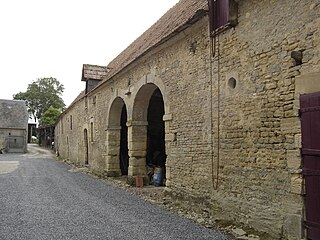
Bazenville is a commune in the Calvados department in the Normandy region of north-western France.
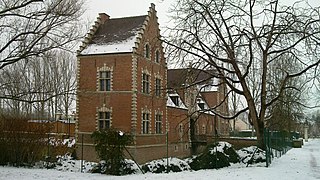
Villeneuve-d'Ascq is a commune in the Nord department in northern France. With more than 60,000 inhabitants and 50,000 students, it is one of the main cities of the Métropole Européenne de Lille and the largest in area (27.46 km2) after Lille. It is also one of the main cities of the Hauts-de-France region.

Bruay-la-Buissière is a commune in the Pas-de-Calais department in the Hauts-de-France region in northern France.

Cagnes-sur-Mer is a French Riviera town near Nice that is in the Alpes-Maritimes department, in the Provence-Alpes-Côte d'Azur region, in southeastern France.
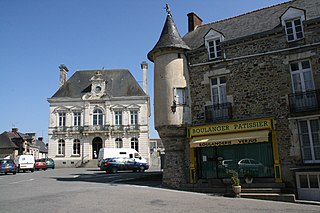
Janzé is a commune in the Ille-et-Vilaine department in Brittany in northwestern France. It is also the seat of the Canton of Janzé. The inhabitants of Janzé are called Janzéens in French.

Ambarès-et-Lagrave is a commune in the Gironde department in the Nouvelle-Aquitaine region of southwestern France. Twinned with Midsomer Norton in the BANES area of the United Kingdom.
Eugène Dodeigne was a French sculptor living and working at Bondues (Nord-Pas-de-Calais).

Annappes is a village and former commune of the Nord Department of France, on the river Marque. In 1970, it was merged with the communes of Ascq and Flers-lez-Lille to form the new commune of Villeneuve d'Ascq. It is still a district of the commune today.
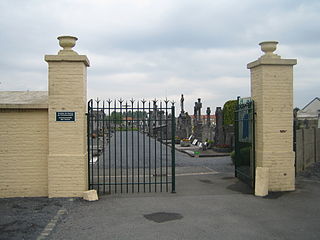
Ascq Communal Cemetery is a cemetery located in the former village of Ascq, today a district of Villeneuve d'Ascq, Nord, France.

Ascq station is a railway station serving the former village of Ascq, now part of Villeneuve-d'Ascq city, Nord department, northern France.
The Ascq massacre was a massacre of 86 men on 1 April 1944 in Ascq, France, by the Waffen-SS during the Second World War.

Saint-Pierre-en-Antioche Church is a Catholic church located in the village of Ascq, now part of the commune of Villeneuve-d'Ascq, Nord department, northern France.
Walter Hauck was a German SS officer infamous for the atrocities committed under his command during the Second World War.

The Fort de Seclin, also known as Fort Duhoux, is located near the commune of Seclin, France, about 9.5 kilometres (5.9 mi) south of Lille. Built from 1873 to 1875, it is part of the Séré de Rivières system of fortifications that France built following the defeat of the Franco-Prussian War. It was never modernized to cope with improvements in artillery technology in the late 19th century. It has been preserved and is interpreted by a local preservation association for the public.
The following is a timeline of the history of the city of Lille, France.

Ludwik Janusz Peretz was a Polish-born French architect.
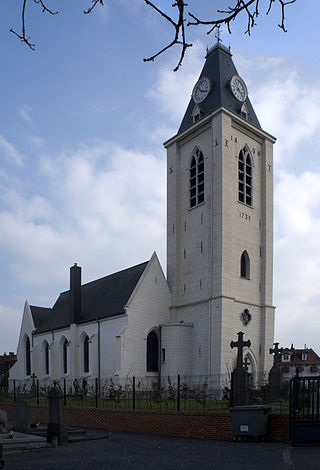
Saint-Sébastien church Catholic church located in the village of Annappes, now part of the commune of Villeneuve-d'Ascq, Nord department, northern France. The church is placed under the patronage of Saint Sebastian, Roman martyr, of whom it houses a relic preserved at the request of the brotherhood of archers of Saint Sebastian founded in 1517.



























